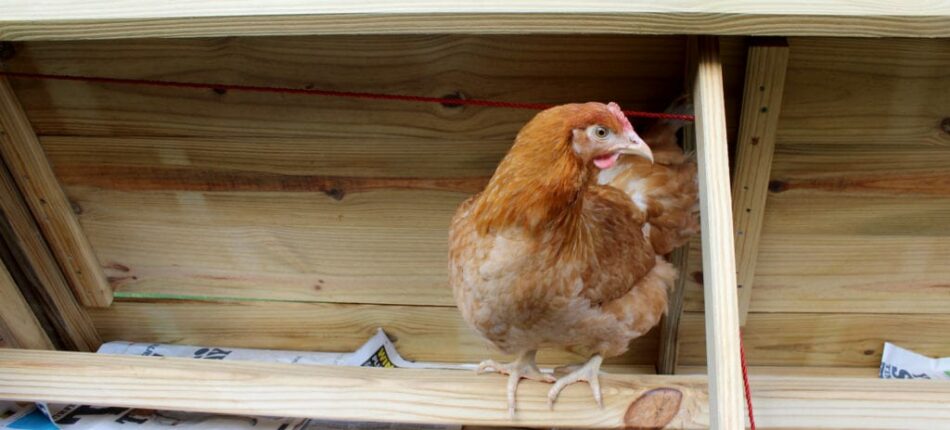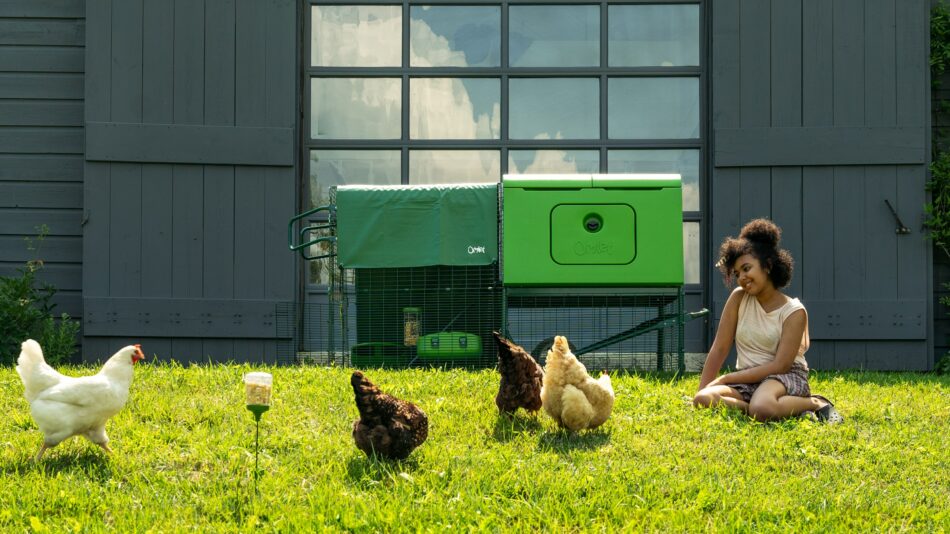Are your chickens happy in their wooden coop?

Are your chickens happy in their wooden coop? Is your chickens’ coop strong enough to make it through another winter? Is it time you upgraded your wooden coop? These are all questions many chicken keepers ask themselves when facing the reality that their wooden coop may not do its job, especially for another cold season. Take this short quiz to see whether your wooden coop is ready for this round of wintery weather.
Wood absorbs water – does your coop seem heavier?
A = Yes – either I’m getting weaker, or my coop has gotten heavier.
B = Yes, but I solved it by getting someone else to move the coop for me.
C = I’ve given up trying to move it.
D = Nope, I spent the summer sanding and sealing my chicken coop with a varnish, so now it’s more water-resistant.
Have you had to pour boiling water onto locks to get them to open?
A = Yes, I have to keep a coop de-icing kit.
B = Boiling water sounds easier than smashing the bolt with a rock or brick to get the coop unlatched during a freeze.
C = I religiously grease all hinges and bolts every few weeks to keep things moving.
D = I have very carefully aligned my coop to the morning sun so that the bolts and hinges have defrosted by the time I get out. On cloudy days I resort to hot water.
Has your wooden coop shifted or expanded since last winter?
A = Yes – the doors all seem too big for the frames, and nothing opens or shuts properly anymore.
B = Yes – the panels have swollen, and now I’m concerned for when they shrink again because I added extra chickens to fill the void.
C = For the most part it appears fine, but some sections don’t align the way they used to.
D = No – the staining and sealing seems to be keeping the coop intact.
Is the roof leaking?
A = Yes – I’ve already fixed the roof a few times this year, and now it’s already leaking again.
B = Yes, but this is the first time and I’m confident that I can fix it myself.
C = No – there aren’t any obvious leaks.
D = My wooden coop is brand new, so I don’t expect to have any problems this winter.
Is it cold and damp inside?
A = Yes – it feels cold inside, and the bedding gets damp quickly.
B = It’s a little chilly, but my hens huddle together to keep warm.
C = I haven’t noticed any dampness, and my hens act alright.
D = The coop keeps warm overnight once I have shut the door, and my chickens are outside during the day.
Did you have difficulties with red mites in summer?
A = Yes – I’ve had to prevent and treat red mites in my coop and chickens regularly, and I’m already dreading the next resurgence.
B = No more than usual – it’s just part of chicken keeping, and I’m used to dealing with them.
C = I had mild issues with red mites, but they weren’t out of control.
D = The red mites didn’t cause a problem in my coop this year.
How long does it take to clean your coop?
A = It’s an all-day task that I dread, so it doesn’t get cleaned regularly in winter.
B = It takes a while, especially in the winter, but I know my hens appreciate it.
C = It takes a few hours, but the whole family helps.
D = It doesn’t take me long at all – I have a good system in place.
The results…
Mostly As = If you experience repeated and frequent issues with your wooden chicken coop like red mites, a leaking roof, or poor ventilation, it’s definitely time to upgrade to a plastic chicken coop. Keeping chickens in the winter doesn’t have to be a dreaded or labor-intensive experience. Plastic chicken coops keep your chickens comfortable, dry, and mite-free all year round.
Mostly Bs = You’ve valiantly kept your wooden chicken coop going this long, and are determined to keep persevering through wooden chicken coop repairs. But the question remains: are your chickens happy in their wooden coop? Keep a watchful eye out for dampness and drafts inside of the coop, as these are extremely dangerous for hens – especially the older members of your flock.
Mostly Cs = You’re no stranger to wooden chicken coops and the potential problems and maintenance they present. But, there are plenty of reasons to avoid wooden chicken coops and to make the switch from wooden to plastic hen houses. Cleaning, comfort, and your overall workload will decrease substantially when you update your coop to plastic.
Mostly Ds = Your wooden chicken coop is in its early days, or you’ve spent countless hours preparing and preserving its integrity. Keep in mind however that all wooden chicken coops rot eventually, and all preservation methods are just that – a temporary improvement until the elements leave their mark on your wooden coop once more. If you’ve just invested in a wooden chicken coop and aren’t ready to make the switch to plastic, consider making some weather-resistant upgrades like an Automatic Chicken Coop Door to keep your hens more comfortable in the cold.
Upgrade with Omlet
Don’t just survive the winter weather – thrive in the cold. With our line of plastic chicken coops, your hens will be warm, dry, and comfortable whatever the weather. The Eglu Cube Chicken Coop is designed for larger flocks to find shelter in the bitter cold. And, with accessories like the Autodoor, you can schedule your flock’s outings to take place during the warmest part of the day, while keeping them tucked in a well-ventilated, draft-free coop at night. See how keeping chickens in the winter doesn’t have to be a chore, just another season to love your flock.
This entry was posted in Chickens
